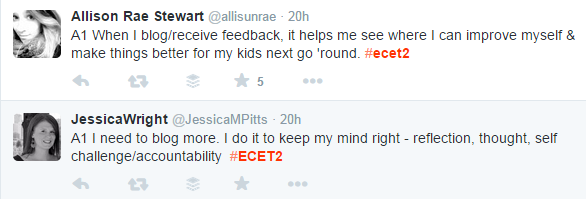Happy Holidays! Every year I share a revised guide to shopping online during the holiday season. It is a busy time of year and my wife and I find that doing the majority of our shopping online helps us both reduce our stress level and save a little bit of money. This guide is built for educators, but just about anyone can find some resources to save some money online. Please let us know in the comments below if you have any additional suggestions or resources we can add to this guide!
1. Online Cashback
There are many sites that take advantage of online advertising to provide the consumer with coupons and cash back for major retailers. They also provide links to some great online coupons from most retailers. They are free and easy to use. Combine this with rewards on a credit card and it can really start to add up.
- Mr. Rebates - Cash Back rebates of up to 30% on all of your online shopping plus get free money-saving coupons at over 2000 online stores.
- Ebates - Find coupons and earn cash back at over 1800 stores when you shop at Ebates! Save with online rebates, deals, promo codes and discounts.
- Mainstreet Shares - MainStreetSHARES gives you more than just cash back when you shop. We help you turn your shopping into an investment in you!
- Fat Wallet - Find coupons, cash back, hottest deals from hundreds of top retailers. Get deals shared by our huge community of frugal shoppers.
2. Apple / Google / Amazon
What Tech are you looking for this year? Smartphone, iPad, iPod, Tablet, Kindle, Wearables, Chromebooks or Macbook? Most major tech retailers will have online and in-store sales.
3. Educator Union Membership Card
Did you know that the IEA / NEA / AFT posts some excellent deals for teachers? These deals include merchandise, restaurants, and travel.
4. Shopping and Coupon Websites
Many websites that compile information about sales, coupons, and deals year round.
What Tech are you looking for this year? Smartphone, iPad, iPod, Tablet, Kindle, Wearables, Chromebooks or Macbook? Most major tech retailers will have online and in-store sales.
3. Educator Union Membership Card
Did you know that the IEA / NEA / AFT posts some excellent deals for teachers? These deals include merchandise, restaurants, and travel.
4. Shopping and Coupon Websites
Many websites that compile information about sales, coupons, and deals year round.
5. Protecting Your Credit Card Online
Most online stores / credit card companies do a great job taking care of credit card purchases, but a great way to pay for many online purchases is to use PayPal. It’s free and provides an extra layer of security between your credit card and online shopping.
Most online stores / credit card companies do a great job taking care of credit card purchases, but a great way to pay for many online purchases is to use PayPal. It’s free and provides an extra layer of security between your credit card and online shopping.
6. Amazon, half.com, and eBay
Great places to shop for just about everything new and used. All three sites have great customer support.
7. Electronic Reviews and Retailers
I know many of you are searching the best gifts for your favorite educators. Here are some great places to research and by electronics for teachers.
Get the Reviews – What’s good or not so good? A couple of sites that I use to decide what I want.
Great places to shop for just about everything new and used. All three sites have great customer support.
7. Electronic Reviews and Retailers
I know many of you are searching the best gifts for your favorite educators. Here are some great places to research and by electronics for teachers.
Get the Reviews – What’s good or not so good? A couple of sites that I use to decide what I want.
- c|net (Great Reviews of Just About Everything Electronic)
- Consumer Reports (Great Reviews and Guides to Lot’s of Stuff)
- PCMag (Main Focus is on Computer Tech)
Online Electronic Retailers – Good prices and excellent service.
- newegg (New and Refurbished Electronics – Just about everything)
- TigerDirect (Tiger Direct and CompUSA all in one – They even have a warehouse on 59 near the mall if you want to save on shipping.
- geeks.com (Great deals on new and refurbished electronics)












.jpg)












.png)
